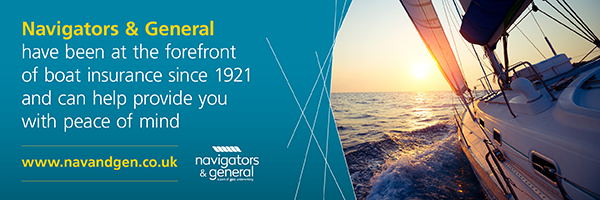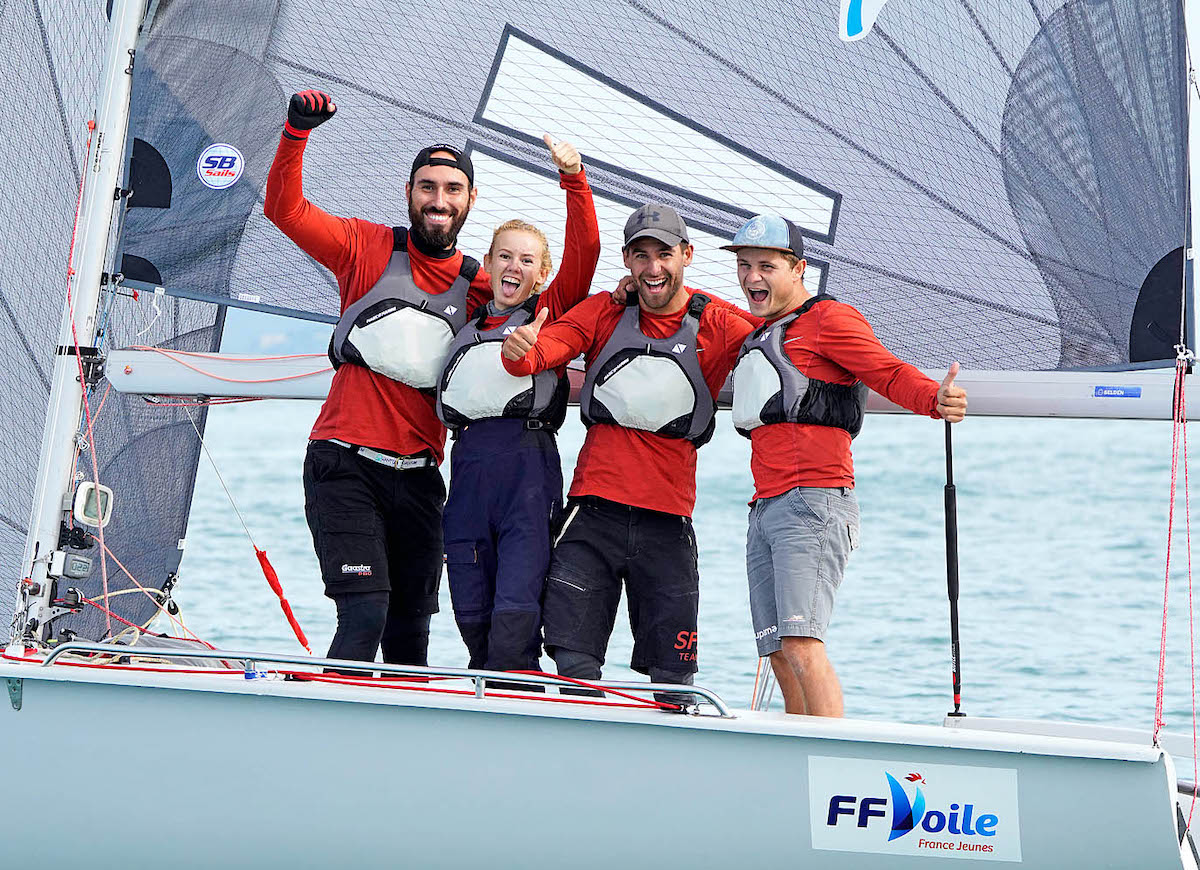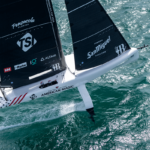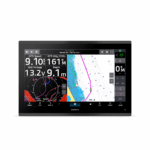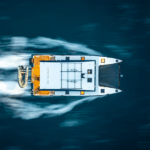For many young sailors the transition from dinghies to keelboats can be uncertain – a point where even the most talented athletes sometimes step away from the sport. Yet in the SB20 Class, that transition has become a proven pathway to the world stage.
In France, the SB20 fleet has become a model of youth retention through its partnership with the French Sailing Federation (FFVoile).
Ed Russo, President of the French SB20 Class, explains that the collaboration was built around a dual mission: “to help transition and retain high-performance sailors who have reached the end of small-boat/dinghy sailing, and to offer those stepping away from Olympic campaigns a chance to continue competing internationally”.
Too often, Russo says, sailors leave the sport after their youth or Olympic careers, “going from high school to university and changing many aspects of their life”. The French Youth Talent Project offers them a viable alternative through an annual selection process. Successful candidates receive access to SB20 boats and coaching support, while covering most of their own sailing costs.
French Olympic medallist and national youth coach Xavier Rohart believes the SB20 remains one of the most effective boats for developing young sailors. Affordable, durable and easy to transport, it allows federations to offer high-level training without prohibitive costs. “It’s a great boat to develop youth potential — powerful, fast and full of sensation,” – he says.
Since 2013, around ten youth teams have come through France’s SB20 program – among them Robin Follin, Achille Nebout, Ian Garreta, and Ange Delerce – many of whom now race professionally. Rohart hopes other nations will follow this model. “It’s affordable for a federation to buy two boats, appoint a coach and support youth teams,” – he notes, adding that event organisers could also include youth support in their bids, as seen at the 2025 Europeans in Ostend through shared accommodation and small grants.
Russo agrees that the Class offers an exceptional return on investment: “Almost all sailing federations are losing members. If you can show that, for a small cost, you can retain a high number of sailors, that’s the key”.
For Robin Follin the SB20 came at a defining moment in his career. In 2014 his Give Me Five team began training for the Worlds, and a year later they were crowned SB20 World Champions in Torbole, Italy.
“We prepared really well with [coach] Philippe Michel,” – recalls Follin. – “But we were young, and no one expected us to win. I think we created a big surprise for many people”.
His team went on to dominate youth events, collecting multiple world and youth titles before winning again at the 2019 Worlds in Hyères – his home waters where he first sailed an Optimist: “It was very special. It proved that youth teams can compete with anyone if they work hard and have the right spirit”.
Those years in the SB20 set Follin on course for a professional career. He later skippered France in the Red Bull Youth America’s Cup, raced in GC32s and in the match racing circuit and now competes offshore, currently sailing in the Transat Café de l’Or aboard his Class 40 Solano.
In 2026 the SB20 Worlds will return to Hyères – a fitting homecoming to the waters that proved how far young sailors can go.
As the SB20 World Championship returns to Torbay in 2027, a new wave of British sailors are already finding their place in the fleet. At this year’s UK Nationals, a youth team supported by Sailing Chandlery and the UK SB20 Class joined the regatta – some just coming out of youth dinghy classes, others returning to the SB20 after first trying it as teenagers. They were instantly hooked by the fun and fast racing and the community that defines the SB20 fleet.
Half a world away, Will Sargent’s journey followed a different route – driven by personal ambition and local support. The Tasmanian sailor raced ILCA dinghies before discovering the SB20 and winning his first national title at just 18.
In 2023, his Ares Racing team claimed the SB20 World Championship in Scheveningen, Netherlands – a result that launched his professional career.
“Winning the SB20 Worlds was one of the key factors that allowed me to become a professional sailor,” – says Sargent. “The result got my name out internationally – which can be hard when you live so far from Europe.”
Today, Will races professionally across both hemispheres in Cape 31s, J70s, SB20s and offshore regattas including Sydney–Hobart. “The SB20 Class always supported the youth teams I sailed with,” – he adds. “As we gained success people only became more supportive – both in Australia and internationally.”
In Malta, a growing fleet of SB20s demonstrates that accessibility and opportunity can thrive even in smaller nations. “The SB20 provides a platform for sailors leaving the ILCA class to continue their sailing,” – said Michael Mifsud, President of the Maltese Sailing Federation. – “It gives them exposure to keelboat racing and opportunities to join larger crews in events like the Rolex Middle Sea Race. For us it’s a fantastic class.”
Belgium’s Royal North Sea Yacht Club has also shown how clubs can lead the way. Its Sailing Betties project – a fleet of five SB20s dedicated to youth and female sailors – is supported by local sponsors and gives young sailors regular access to regattas and training. The Betties have progressed significantly in the two-year lead-up to the 2025 SB20 Europeans in Ostend thanks to this programme.
University and school sailing programmes have also found a natural fit in the SB20. Teams such as D.S.W.Z. Broach in the Netherlands, NUS and SMU Sailing in Singapore, Radley College in the UK or Hutchins School in Tasmania use the Class to give students hands-on keelboat experience and a pathway into competitive sailing.
From national programmes, like France’s, to Clubs, universities and private support in countries all over the world, the SB20 has shown there’s no single path to success. The Class provides a platform where young sailors can learn, compete and connect across generations. As more nations look for ways to keep talented sailors engaged beyond their youth classes, one question comes naturally – could the SB20 be the answer?
By: Anna Zyk/SB20 Class






